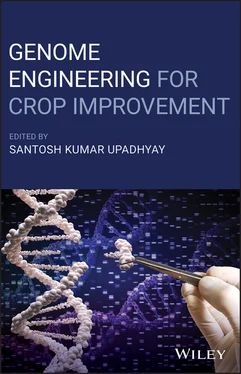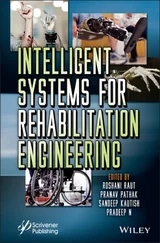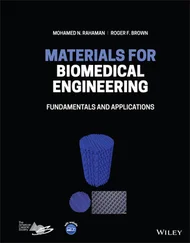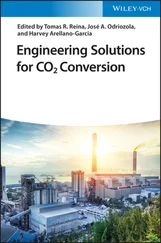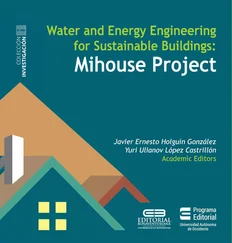155 Wang, F., Wang, C., Liu, P. et al. (2016). Enhanced rice blast resistance by CRISPR/Cas9‐targeted mutagenesis of the ERF transcription factor gene OsERF922. PLoS One 11 (4): e0154027.
156 Wang, M., Mao, Y., Lu, Y. et al. (2017). Multiplex gene editing in rice using the CRISPR‐Cpf1 system. Molecular Plant 10 (7): 1011–1013.
157 Wendt, T., Holm, P.B., Starker, C.G. et al. (2013). TAL effector nucleases induce mutations at a pre‐selected location in the genome of primary barley transformants. Plant Molecular Biology 83 (3): 279–285.
158 Wilson, F.M., Harrison, K., Armitage, A.D. et al. (2019). CRISPR/Cas9‐mediated mutagenesis of phytoene desaturase in diploid and octoploid strawberry. Plant Methods 15 (1): 45.
159 Wright, D.A., Townsend, J.A., Winfrey, R.J. Jr. et al. (2005). High‐frequency homologous recombination in plants mediated by zinc‐finger nucleases. The Plant Journal 44 (4): 693–705.
160 Wu, X., Scott, D.A., Kriz, A.J. et al. (2014). Genome‐ wide binding of the CRISPR endonuclease Cas9 in mammalian cells. Nature Biotechnology 32: 670–676.
161 Xie, S., Shen, B., Zhang, C. et al. (2014). sgRNAcas9: a software package for designing CRISPR sgRNA and evaluating potential off‐target cleavage sites. PLoS One 9 (6): e100448.
162 Xu, R., Yang, Y., Qin, R. et al. (2016). Rapid improvement of grain weight via highly efficient CRISPR/Cas9‐mediated multiplex genome editing in rice. Journal of Genetics and Genomics= Yi chuan xue bao 43 (8): 529.
163 Xu, R., Qin, R., Li, H. et al. (2017). Generation of targeted mutant rice using a CRISPR‐Cpf1 system. Plant Biotechnology Journal 15 (6): 713–717.
164 Xu, X., Gao, J., Dai, W. et al. (2019). Gene activation by a CRISPR‐assisted trans enhancer. eLife 8: e45973. Published 2019 Apr 11. doi: https://doi.org/10.7554/eLife.45973.
165 Xu, Z.S., Feng, K., and Xiong, A.S. (2019). CRISPR/Cas9‐mediated multiply targeted mutagenesis in orange and purple carrot plants. Molecular Biotechnology 61 (3): 191–199.
166 Yamamuro, C., Zhu, J.K., and Yang, Z. (2016). Epigenetic modifications and plant hormone action. Molecular Plant 9 (1): 57–70.
167 Yan, W.X., Mirzazadeh, R., Garnerone, S. et al. (2017). BLISS is a versatile and quantitative method for genome‐wide profiling of DNA double‐strand breaks. Nature Communications 8 (1): 1–9.
168 Yao, L., Zhang, Y., Liu, C. et al. (2018). OsMATL mutation induces haploid seed formation in indica rice. Nature Plants 4 (8): 530–533.
169 Yin, X., Biswal, A.K., Dionora, J. et al. (2017). CRISPR‐Cas9 and CRISPR‐Cpf1 mediated targeting of a stomatal developmental gene EPFL9 in rice. Plant Cell Reports 36 (5): 745–757.
170 Zaidi, S.S.E.A., Mahfouz, M.M., and Mansoor, S. (2017). CRISPR‐Cpf1: a new tool for plant genome editing. Trends in Plant Science 22 (7): 550–553.
171 Zetsche, B., Gootenberg, J.S., Abudayyeh, O.O. et al. (2015). Cpf1 is a single RNA‐guided endonuclease of a class 2 CRISPR‐Cas system. Cell 163 (3): 759–771.
172 Zhang, F., Maeder, M.L., Unger‐Wallace, E. et al. (2010). High frequency targeted mutagenesis in Arabidopsis thaliana using zinc finger nucleases. Proceedings of the National Academy of Sciences 107 (26): 12028–12033.
173 Zhang, F., Cong, L., Lodato, S. et al. (2011). Efficient construction of sequence‐specific TAL effectors for modulating mammalian transcription. Nature Biotechnology 29 (2): 149.
174 Zhang, Y., Zhang, F., Li, X. et al. (2013). Transcription activator‐like effector nucleases enable efficient plant genome engineering. Plant Physiology 161: 20–27.
175 Zhang, Y., Bai, Y., Wu, G. et al. (2017). Simultaneous modification of three homoeologs of ta EDR 1 by genome editing enhances powdery mildew resistance in wheat. The Plant Journal 91 (4): 714–724.
176 Zhang, Y., Li, D., Zhang, D. et al. (2018). Analysis of the functions of ta GW 2 homoeologs in wheat grain weight and protein content traits. The Plant Journal 94 (5): 857–866.
177 Zhang, K., Nie, L., Cheng, Q. et al. (2019). Effective editing for lysophosphatidic acid acyltransferase 2/5 in allotetraploid rapeseed (Brassica napus L.) using CRISPR‐Cas9 system. Biotechnology for Biofuels 12 (1): 1–18.
178 Zhi, J., Liu, X., Li, D. et al. (2020). CRISPR/Cas9‐mediated SlAN2 mutants reveal various regulatory models of anthocyanin biosynthesis in tomato plant. Plant Cell Reports 39 (6): 799–809.
179 Zhou, J., Peng, Z., Long, J. et al. (2015). Gene targeting by the TAL effector PthXo2 reveals cryptic resistance gene for bacterial blight of rice. The Plant Journal 82 (4): 632–643.
180 Zhu, L.J., Holmes, B.R., Aronin, N., and Brodsky, M.H. (2014). CRISPRseek: a bioconductor package to identify target‐specific guide RNAs for CRISPR‐Cas9 genome‐editing systems. PLoS One 9 (9): e108424.
1 #Equal Contribution
2 Distribution of Nutritional and Mineral Components in Important Crop Plants
Katarina Vogel‐Mikuš1,2, Paula Pongrac1,2, Ivan Kreft3, Primož Pelicon2, Primož Vavpetič2, Boštjan Jenčič2, Johannes Teun van Elteren4, Peter Kump2, Sudhir P. Singh5, and Marjana Regvar1
1 Biotechnical Faculty, University of Ljubljana, Ljubljana, Slovenia
2 Jozef Stefan Institute, Ljubljana, Slovenia
3 Nutrition Institute, Ljubljana, Slovenia
4 National Institute of Chemistry, Ljubljana, Slovenia
5 Center of Innovative and Applied Bioprocessing (DBT‐CIAB), Mohali, Punjab, India
2.1 Introduction
2.2 Exploring Nutrient Distribution in Grain 2.2.1 Matrix Assisted Laser/Desorption/Ionization 2.2.2 Secondary Ion Mass Spectroscopy 2.2.3 Fourier Transform Infrared Spectroscopy
2.3 Exploring the Mineral Distribution in Grain 2.3.1 Nuclear Microprobe 2.3.2 Synchrotron Radiation X‐Ray Florescence Spectrometry 2.3.3 Laser Ablation‐Inductively Coupled Plasma Mass Spectrometry 2.3.4 Nano Secondary Ion Mass Spectrometry 2.3.5 Sample Preparation
2.4 Prospect
Plants provide us with essential energy‐rich compounds, minerals, vitamins, amino and fatty acids, and a wealth of health‐promoting compounds (Eckardt 2011). The cultivation of new, high‐yielding varieties and the ever‐increasing use of mineral fertilizers and pesticides has led to a significant increase in crop yields. However, the quality of edible plants related to human nutrition did not receive proper attention until the 1990s, when an increasing number of reports started to appear on inadequate diet and unbalanced nutrition in vulnerable, low‐income populations in many countries, leading to poor health, low productivity and an increase in chronic diseases (Eckardt 2011).
The quality of crops and their produce is a highly complex concept as it depends on the large number of plant traits which, in turn, are controlled by numerous underlying genetic and exogenous factors. In addition, the global increase in temperature, UV radiation, CO 2and ozone pollution, and drought and field salinization, place an even greater strain on crop performance. The need to adapt to constantly changing abiotic conditions leads to unpredictable changes in the biochemical composition of crops and, consequently, in the quality of food. In addition, biotic stress such as bacterial, fungal, and viral infections induce changes in the metabolic pathways with the aim of synthesizing self‐protecting biochemicals, but often at the expense of energy‐rich and health‐promoting compounds such as anthocyanins.
This chapter will focus on cereals and pseudo‐cereal plants that produce starchy grains since they are part of almost every meal we eat. Grains consists of the plant embryo – a miniature plant – and the seed coat that protects the embryo from abiotic and biotic stress. Storage compounds (starch, proteins, and lipids) that provide energy and building blocks for the young, developing plant after germination, are stored in the endosperm or in the cotyledons, while minerals are mainly stored in the aleurone layer or in the embryo. Nutrients and minerals are not evenly distributed within the grain (Pongrac et al. 2011; Singh et al. 2013, 2014; Vogel‐Mikuš et al. 2014; Mantouvalou et al. 2017). This is of high relevance for human nutrition, as cereals are usually processed before consumption, and certain nutritious compounds stored in the seed coat or embryonic tissue may be lost. There is, therefore, an urgent need to develop research tools that will provide better insights into the 2D and 3D spatial distribution of nutrients and minerals in cereals and the mechanisms behind these distribution patterns.
Читать дальше
